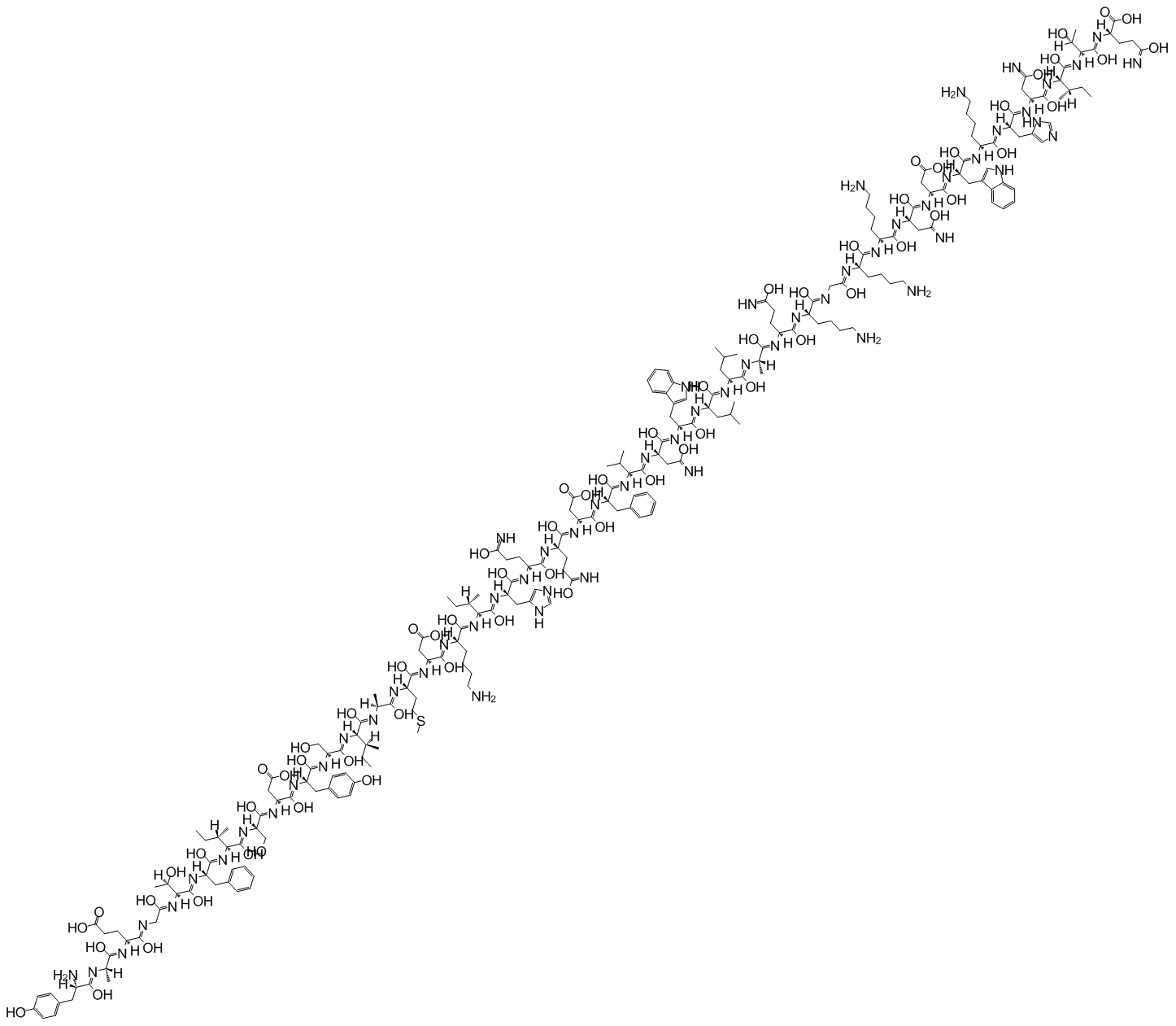GIP (human) |
| رقم الكتالوجGC17838 |
GIP (بشري) ، هرمون ببتيد يتكون من 42 حمضًا أمينيًا ، هو محفز لإفراز الأنسولين المعتمد على الجلوكوز ومثبط ضعيف لإفراز حمض المعدة.
Products are for research use only. Not for human use. We do not sell to patients.

Cas No.: 100040-31-1
Sample solution is provided at 25 µL, 10mM.
Gastric inhibitory polypeptide, also known as glucose-dependent insulinotropic polypeptide (GIP), is a 42-amino acid peptide that plays an important role in maintaining glucose and lipid homeostasis. Although originally discovered as an inhibitor of gastric acid secretion, its principal physiological property is its role as an incretin peptide, in which it mediates the enteroinsular axis. GIP is synthesized by enteroendocrine K-cells of the duodenum/proximal jejunum, and its secretion is stimulated postprandially. GIP signaling stimulates glucose absorption in enterocytes, potentiates endogenous glucose-dependent insulin release from islet beta-cells, increases glucose uptake while inhibiting lipolysis in adipocytes, increases nutrient uptake into bone, and inhibits bone resorption [1].
The competition binding experiments were carried out in transiently transfected COS-7 cells using 125I GIP as radioligand. For the homologous competition binding, an IC50 value of 5.2 nM was observed [2]. GIP receptor messenger RNA was detected by RT-PCR and RNase protection assay. Receptors were detected in binding studies (IC50 26.7 +/- 0.7 nM). GIP stimulated glycerol release with an EC50 of 3.28 +/- 0.63 nM [3].
Perfusion of the pancreas with 1 nM GIP increased insulin secretion significantly (P[2]. The effects of GIP on fat metabolism in vivo may depend upon the circulating insulin level, and that meal-released GIP may elevate circulating fatty acids, thus optimizing pancreatic β-cell responsiveness to stimulation by glucose and GIP [3].
References:
[1].Zhang CY, Boylan MO, Arakawa H, Wolfe MM. Effects of gastric inhibitory polypeptide (GIP) immunoneutralization on mouse motor coordination and memory. Peptides. 2020 Mar;125:170227.
[2].Deacon CF, Plamboeck A, Rosenkilde MM, de Heer J, Holst JJ. GIP-(3-42) does not antagonize insulinotropic effects of GIP at physiological concentrations. Am J Physiol Endocrinol Metab. 2006 Sep;291(3):E468-75.
[3].McIntosh CH, Bremsak I, Lynn FC, Gill R, Hinke SA, Gelling R, Nian C, McKnight G, Jaspers S, Pederson RA. Glucose-dependent insulinotropic polypeptide stimulation of lipolysis in differentiated 3T3-L1 cells: wortmannin-sensitive inhibition by insulin. Endocrinology. 1999 Jan;140(1):398-404.
Average Rating: 5 (Based on Reviews and 18 reference(s) in Google Scholar.)
GLPBIO products are for RESEARCH USE ONLY. Please make sure your review or question is research based.
Required fields are marked with *




















